
8 July 2021
Summer is a challenging time to identify birds when fledglings look quite different from adults. Here are seven species whose babies can honestly say, “I don’t look like my parents.”
American robin adults (left) have plain rust-colored breasts. Juveniles (right) have spotted breasts.
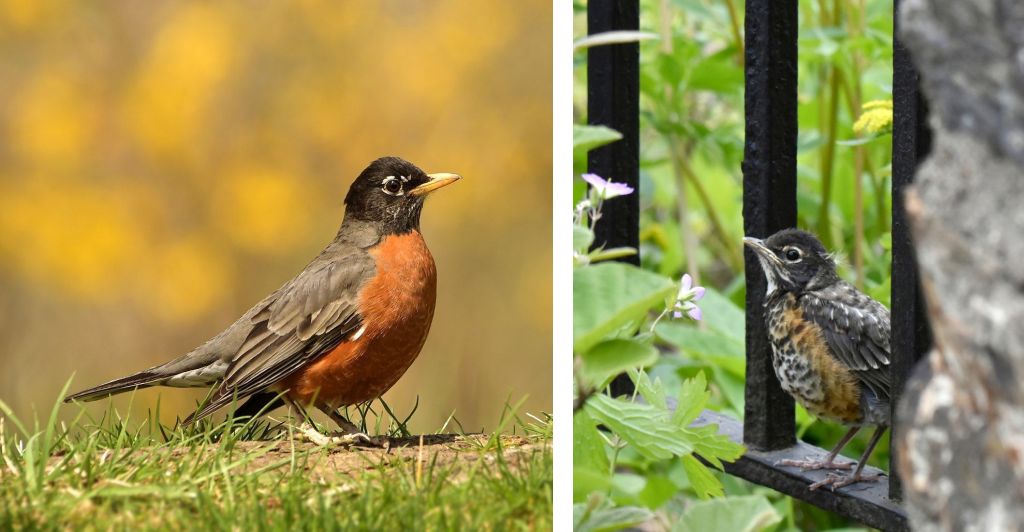
The differences between juvenile and adult downy woodpeckers are subtle. Juveniles (left) have a faint red patch on top of the head while adult males (right) have a vibrant splash of red on the back of the head. (Don’t be fooled by the red flower behind the male in this photo.)
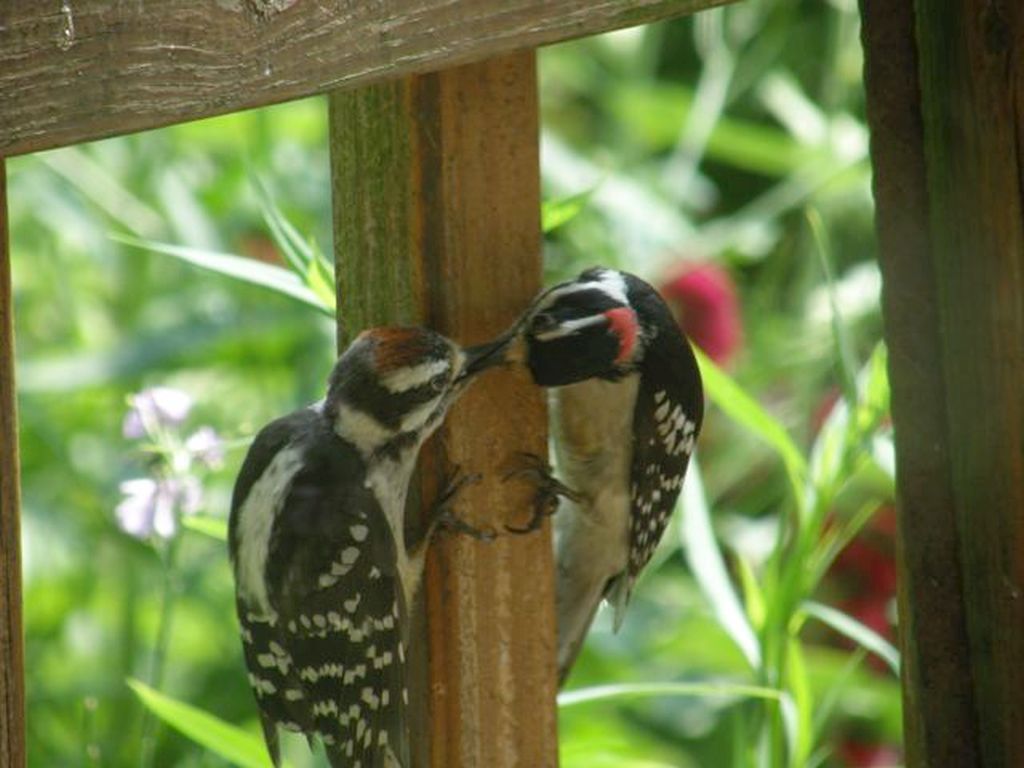
Red-bellied woodpecker juveniles (middle photo) are very plain with no red on their heads. Adult males (left) are red from bill to nape while adult females (right) have red napes, pale foreheads, and a spot of red at the bill.

In breeding plumage adult European starlings (left) are iridescent glossy black while fledglings are dull brown (right). Check out the shape of the fledgling’s beak and how he opens it. He has that in common with his parents.
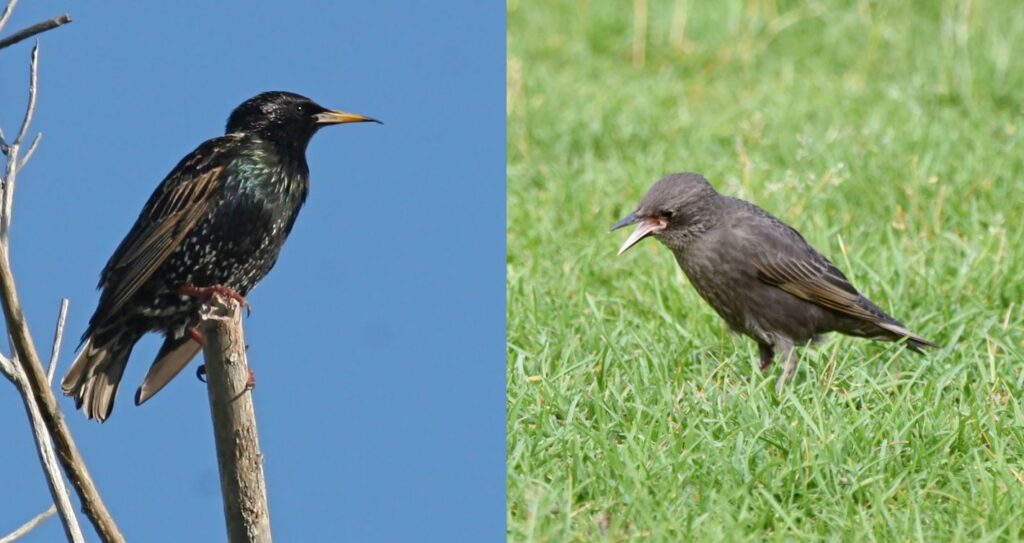
Juvenile northern cardinals (dark bird on branch) resemble their mothers but the juveniles have dark beaks. Their mothers (at right) have orange beaks.
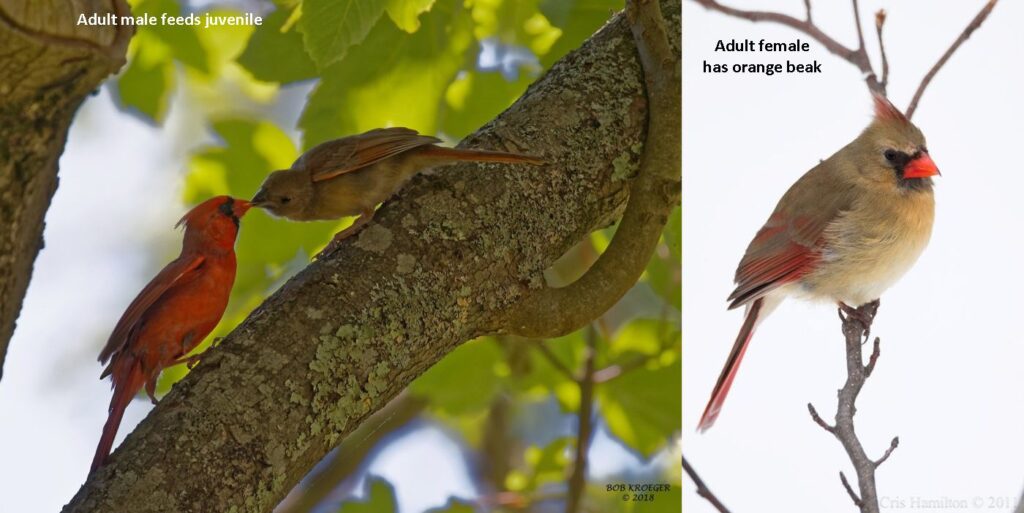
Juvenile brown-headed cowbirds never look like their foster parents. These dull brown, chunky birds have short, fat necks and “fat” beaks. The beak is the clue.
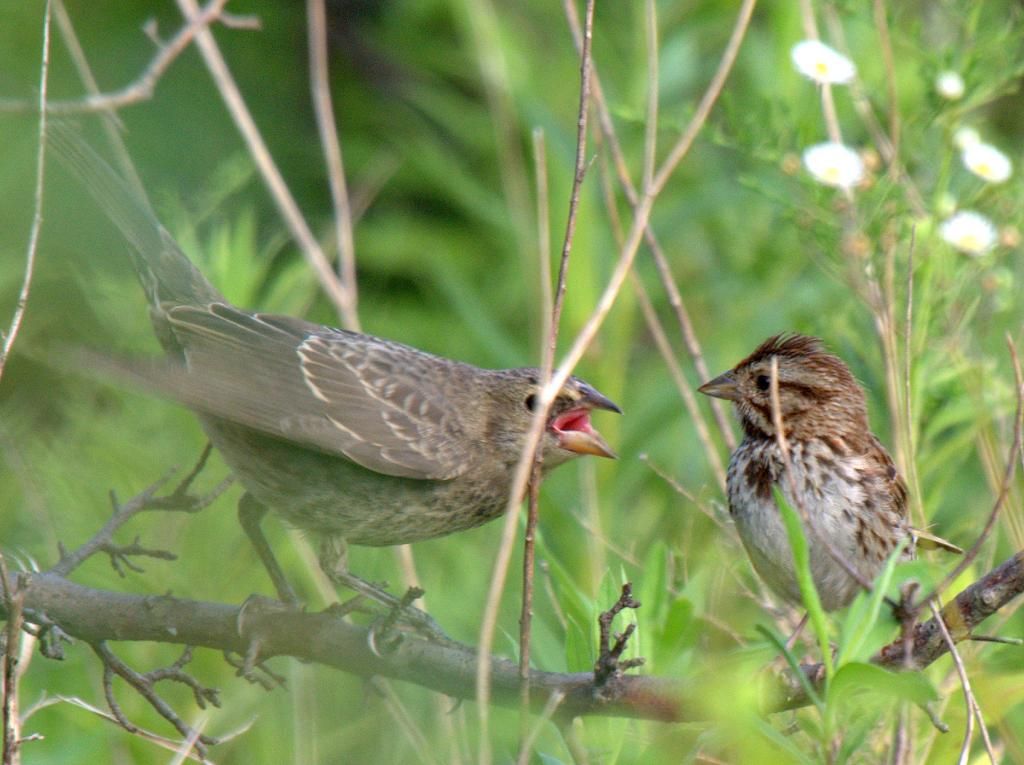
And finally, young chipping sparrows look so different from their parents that you’d think they’re another species. The juveniles are stripey brown (photo at top) while their parents have plain pale breasts and rusty caps. The best way to identify a fledgling chipping sparrow is to watch who it begs from.
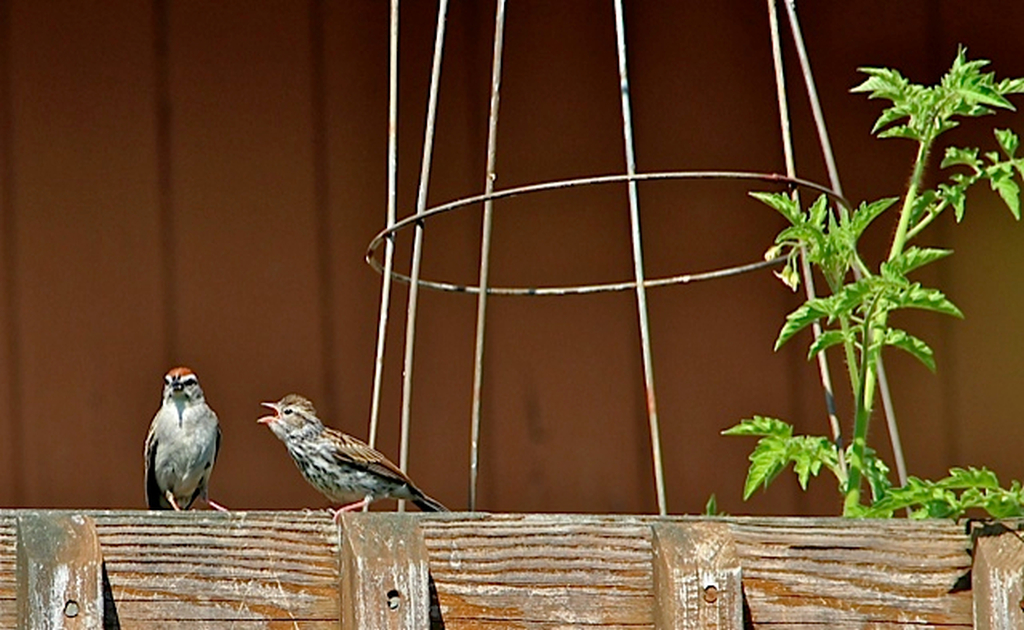
A Hat Tip for this topic goes to Mary Ann Pike who described it in a comment yesterday.
Did you find any fledglings hard to identify this year? Let me know in a comment.
(photos by Marcy Cunkelman, Steve Gosser, Charity Kheshgi, Cris Hamilton, Bob Kroeger, Wikimedia Commons)
I noticed that fledgling bluebirds look quite a bit different than their parents. (Two broods in my home made house so far this season, and a third nest already built.)
I saw juvie chipping sparrows for the first time last week. I spent anout an hour looking through my bird book trying to decide which “new” sparrow showed up in my yard. And then I saw one with the parent and had an aha moment. 🙂